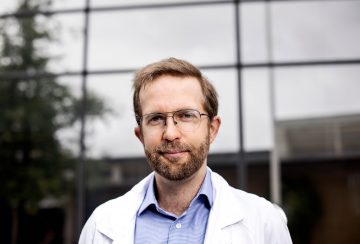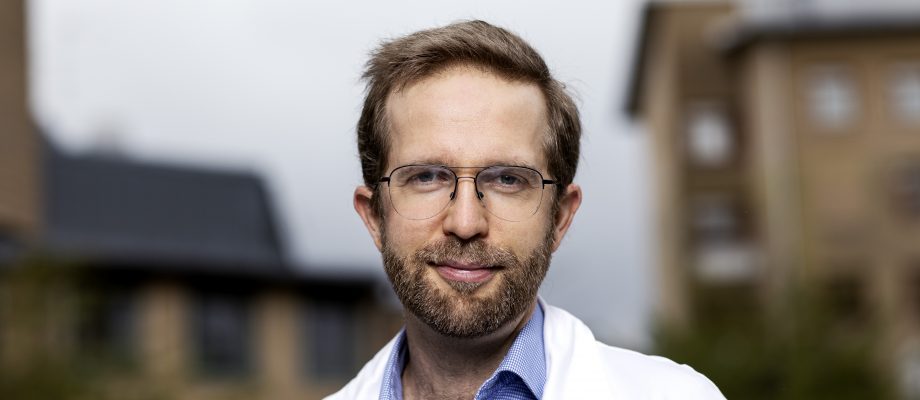YOUNG RESEARCHERS. Björn Redfors has been awarded an ERC Starting Grant of around SEK 15 million for his research on heart attacks. He wants to understand what happens when parts of the heart muscle are temporarily disabled during an acute heart attack, in hopes of developing better treatments.
After two years as a postdoctoral fellow at the Clinical Trials Center at the Cardiovascular Research Foundation in New York, he has returned to the university where he defended his dissertation. Back home in Gothenburg, his research successes have already led to several major external grants, including a clinical research position at the Wallenberg Centre for Molecular and Translational Medicine at the University of Gothenburg, the Swedish Society for Medical Research’s Large Grant, project funding from the Swedish Heart-Lung Foundation, and Sahlgrenska Academy’s international start-up grant. And to top it off, he has now been awarded one of the most prestigious grants a young European researcher can receive, an ERC Starting Grant.

“Of course, this is great. To receive the ERC’s Starting Grant means, above all, that my research project during the grant period is secured and I avoid uncertainty about funding for the next five years. It gives me the opportunity to build up my research group without having to worry about money,” says Björn Redfors, who is a cardiologist at Sahlgrenska University Hospital and associate professor of cardiology at Sahlgrenska Academy.
The heart may stun itself
Redfors researches what is known as myocardial stunning, which means that parts of the heart muscle are temporarily disabled in an acute heart attack. He wants to better understand the phenomenon and investigate whether it can be influenced to optimize cardiac function and improve the prognosis for patients with acute myocardial infarction.
“The heart suddenly stops working, even though the tissue itself is viable. It is unclear why. Traditionally, it is believed to be due to damage to brain tissue from the lack of oxygen that occurs during a heart attack.”
Possibly a natural protection for the heart
But myocardial stunning occurs before these injuries become irreversible. His hypothesis is that it is a mechanism that provides protection at the cellular level and that the heart muscle cells use it to save energy.
“I believe that myocardial stunning protects the heart muscle cell, but the loss of pumping ability that the phenomenon causes can be life threatening for the body as a whole. If we can understand the mechanisms behind myocardial stunning, I hope we can influence the stunning phenomenon and, thus, hopefully improve the prognosis for patients.
Several upcoming studies
The findings from the research could benefit patients relatively quickly, Redfors believes. He enjoys working with a topic that is directly clinically relevant. He says that the group has several interesting upcoming studies, both patient-centered and laboratory-based. In a key study, they will carefully study patients with the most dramatic type of heart attack, known as ST elevation myocardial infarction, using ultrasound, magnetic resonance imaging, and biobanks.
“We want to understand what the natural course of myocardial stunning and recovery of cardiac function in the acute phase looks like.” That study will be supplemented with an experimental model where we can test different treatment methods. We then plan to study the treatment methods that work well in the experimental model in the clinical setting.”
An art to recruiting
In his position as associate senior lecturer, he leads a small group at the Wallenberg Laboratory with a couple of talented staff members, and one of the challenges ahead of him is recruiting additional talent to groups.

“The success of the research project largely depends on whether I can recruit, motivate, and retain talented doctoral students, researchers, and colleagues from the clinic.”
He is very thankful for research adviser Joel Jakobsson at the Grants and Innovation Office, who both encouraged him to apply and was also very helpful during the application process.
“His expertise with the application process for the ERC Starting Grant and his willingness to help were invaluable. I feel that I have also received really good support from other people from the faculty and the institute, but Joel played a large part in me receiving the grant.”
TEXT: ELIN LINDSTRÖM











